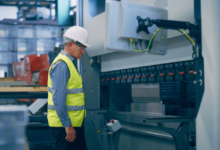The Environmental Impact of Dubai’s Artificial Islands

Dubai has gained global recognition for its architectural and engineering marvels, especially its iconic artificial islands, such as Palm Jumeirah, The World Islands, and the emerging Dubai Islands. These man-made islands have transformed the city’s coastline, attracting tourists, investors, and luxury homebuyers. While these islands showcase human innovation and ambition, they also raise important questions about their environmental impact. The construction and development of these islands have had significant consequences on marine ecosystems, coastal erosion, water circulation, and biodiversity.
This article will explore the environmental impact of Dubai’s artificial islands, focusing on how their development has affected the natural environment and what steps are being taken to mitigate these effects.
1. Disruption of Marine Ecosystems
One of the most significant environmental concerns surrounding Dubai’s artificial islands is the disruption of marine ecosystems. The construction of these islands required dredging millions of tons of sand from the seafloor and depositing it on the surface to form the island’s foundation. This process, known as land reclamation, disturbs marine habitats and can destroy coral reefs, seagrass beds, and the natural habitat of various marine species.
In the case of Palm Jumeirah and The World Islands, the dredging process led to the loss of large areas of coral reefs, which are vital to marine biodiversity. Coral reefs provide shelter and food for fish, sea turtles, and other marine creatures. The destruction of these reefs has resulted in the displacement of species and a reduction in biodiversity in the affected areas. In addition, the construction of the islands has disrupted the migratory patterns of marine species that rely on Dubai’s coastal waters as part of their natural routes.
The impact of land reclamation extends beyond the immediate construction area. The dredging process stirs up sediments from the ocean floor, leading to increased turbidity in the water. This cloudiness reduces the amount of sunlight reaching the ocean floor, which is essential for the growth of seagrass and other marine plants. Without sufficient sunlight, these plants struggle to survive, leading to further loss of marine habitats.
2. Coastal Erosion and Altered Water Flow
The construction of artificial islands also impacts natural coastal processes, particularly water circulation and sediment movement. The shape and size of islands like Palm Jumeirah and The World Islands have altered the natural flow of currents along Dubai’s coastline. These changes can lead to coastal erosion in some areas and excessive sediment buildup in others.
For example, the breakwaters and artificial beaches on these islands can disrupt the natural movement of sand along the coastline. This can cause erosion on nearby beaches, leading to the loss of natural habitats and making coastal areas more vulnerable to storm surges and rising sea levels. On the other hand, areas within the protective barriers of the islands may experience sediment buildup, which can affect the clarity and quality of water in these regions.
Additionally, the artificial islands have created enclosed lagoons, where water circulation is limited. Reduced water flow can lead to stagnant water, which may increase the likelihood of algae blooms and water pollution. These issues can negatively impact the surrounding marine environment, as well as the aesthetic and recreational value of the islands.
3. Impact on Water Quality
The construction of Dubai’s artificial islands has also affected the quality of water in the surrounding areas. The dredging process and the creation of artificial beaches have introduced large amounts of sediments into the water, increasing turbidity. Higher turbidity levels reduce the amount of sunlight penetrating the water, affecting marine plants and animals that rely on clear water for photosynthesis and feeding.
Furthermore, the construction and development of the islands have led to increased human activity, including tourism, boating, and commercial development. These activities contribute to pollution in the form of plastic waste, oil spills, and other contaminants. The enclosed nature of some of the island developments, such as The World Islands, has exacerbated these problems by reducing the ability of natural currents to flush out pollutants.
In response to these issues, developers and local authorities have implemented measures to monitor and manage water quality around the islands. For example, Nakheel, the developer of Palm Jumeirah and Dubai Islands, has worked with environmental agencies to conduct regular water quality assessments and implement waste management systems to reduce pollution.
4. Biodiversity Loss
The construction of Dubai’s artificial islands has resulted in the loss of biodiversity in the affected areas. Coral reefs, seagrass beds, and mangroves, which are essential habitats for many marine species, have been significantly reduced or destroyed during the land reclamation process. These ecosystems play a critical role in supporting fish populations, providing coastal protection, and maintaining the overall health of marine environments.
The destruction of coral reefs is particularly concerning because reefs are one of the most biologically diverse ecosystems on Earth. They serve as nurseries for young fish and other marine organisms, and their loss can have a cascading effect on the entire food chain. Additionally, coral reefs help protect coastlines from erosion by acting as natural barriers to waves. Without these natural barriers, the artificial islands and nearby coastal areas may become more susceptible to erosion and damage from storms.
Efforts are being made to restore some of the lost biodiversity through artificial reef programs and the transplantation of coral. Developers have introduced man-made structures designed to encourage coral growth and provide habitats for fish. These initiatives aim to recreate some of the lost habitats and mitigate the long-term effects of land reclamation on marine biodiversity.
5. Steps Toward Sustainability
Recognizing the environmental impact of past projects, Dubai’s new island developments, particularly Dubai Islands, are being designed with a greater focus on sustainability. Developers are increasingly aware of the need to minimize the ecological footprint of their projects and incorporate eco-friendly practices into their designs.
For example, Dubai Islands is being planned with green building technologies, renewable energy sources, and water conservation measures. The development will also include extensive green spaces and parks to promote biodiversity and provide habitats for native species. These initiatives are part of Dubai’s broader vision to become a sustainable city by 2050.
To address the issue of coastal erosion and water circulation, developers are working closely with environmental consultants to design island shapes and structures that complement natural currents and reduce the risk of erosion. In addition, the use of sustainable materials and construction techniques is helping to reduce the environmental impact of these projects.
Conclusion
While Dubai’s artificial islands have brought economic growth, tourism, and global recognition to the city, they have also caused significant environmental impacts. The disruption of marine ecosystems, coastal erosion, and loss of biodiversity are just some of the challenges posed by the development of these islands. However, efforts are being made to mitigate these effects through sustainable design, environmental monitoring, and habitat restoration initiatives.
As Dubai continues to develop its coastline, particularly with projects like Dubai Islands, a balance must be struck between economic development and environmental conservation. By prioritizing sustainability and eco-friendly practices, Dubai can ensure that its future island developments contribute to the city’s growth while minimizing their impact on the natural environment.






